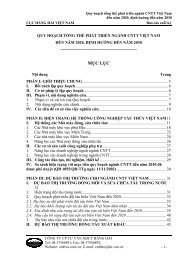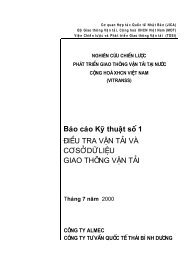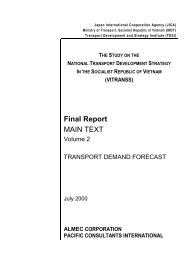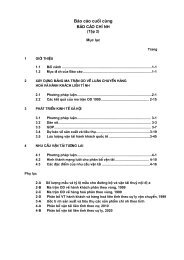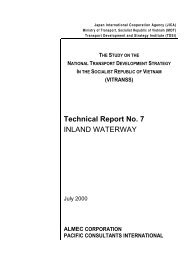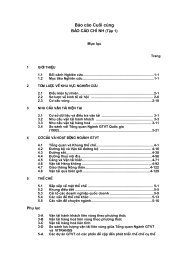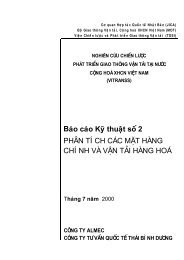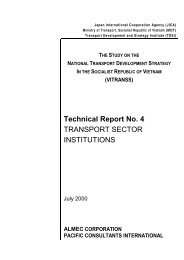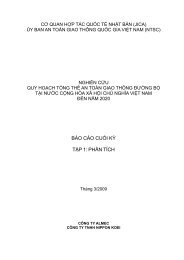Technical Report No. 8 PORT AND SHIPPING
Technical Report No. 8 PORT AND SHIPPING
Technical Report No. 8 PORT AND SHIPPING
Create successful ePaper yourself
Turn your PDF publications into a flip-book with our unique Google optimized e-Paper software.
II-4-13<br />
Vietnam National Transport Strategy Study (VITRANSS)<br />
<strong>Technical</strong> <strong>Report</strong> <strong>No</strong>. 8<br />
Shipping and Ports<br />
But in other cases, governmental opinion may not coincide with local<br />
conditions, therefore the establishment of a management committee<br />
composed of local transport officers and users is recommended as an<br />
advisory organization.<br />
(3) VINAMARINE Port<br />
Based on the separate functions of the “Regulator (government)” and<br />
“Operator (Port Management Body)”, VINAMARINE should operate<br />
unprofitable but socially important ports only, since it would be difficult for<br />
the regulator to direct it (VINAMARINE) with the same strictness as would<br />
a private company.<br />
3) Port Operation<br />
The productivity of port operation shall be improved to meet increasing port<br />
traffic in the future. Speedy handling, clean operation and safe transport are<br />
common in a modern terminal. If a tariff system reflects improved productivity<br />
or a port contract provides incentives, for example, discounts, a port user can<br />
accept it. At present, the discount rate in Vietnamese ports is set at a<br />
maximum of 10%, but double this would still be reasonable. In the case of<br />
Singapore port, its discount rate ranges up to 30% depending on container<br />
handling volume.<br />
4) Containerization<br />
Containerization of maritime cargo commenced in 1966 and reached its level<br />
of saturation in developed countries 25 years later.<br />
In Vietnam, containerization started in the late 1980s. Its containerization<br />
level is projected to match that of developed countries, at 7.0 million TEU<br />
under the high case in 2020. Compared with world container statistics, this<br />
figure is almost the same as that of Japan in 1988 and the UK in 1997.Usually<br />
container cargo volume begins at a low level, increasing rapidly after five<br />
years. After 25 years and nearing the maximum capacity, the increase rate<br />
tapers off. The necessary period of containerization development in Vietnam<br />
before it reaches the same level as that of its trading partners is estimated at<br />
25 years.<br />
There seems to be two inverse conditions observed in Vietnam. The longer<br />
the route distance, the less direct shipping services available. The more there<br />
are volumes on a route, the more there are direct shipping services.<br />
On a long sea route, a larger container vessel has less unit container<br />
transport cost compared with a smaller vessel. Therefore, shipping lines<br />
generally tend to use larger vessels and collect more containers for a long



